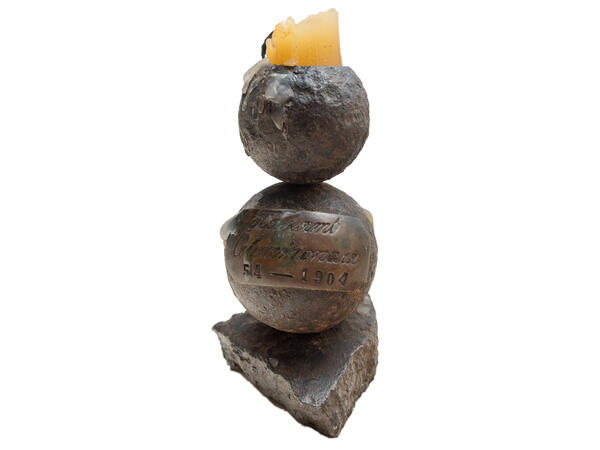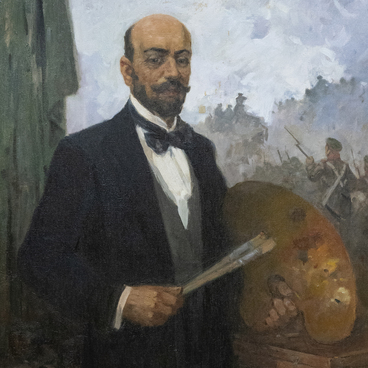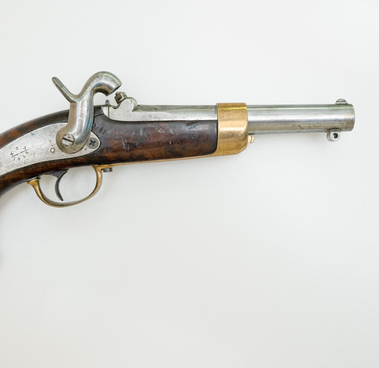Several centuries ago, candles were the main source of illumination. Therefore, candlesticks were used in almost every home: they helped to securely fix a burning candle and safely carry it from place to place. According to historical data, the first such holders appeared in Ancient Egypt — they were used during ritual ceremonies dedicated to the sun god Ra. Candlesticks were made from improvised raw materials: reed, clay, and wood. As a rule, they were in the form of a smooth pole or trunk, which were decorated with leaves on top. They were installed in ancient temples and homes of people with high incomes.
In Ancient Greece, candlesticks were most often molded from clay and varnished. In other countries, sugarcane and ivory were the materials for these items. Later, the craftsmen began to make metal and stone candlesticks. The appearance of the object in those days did not really matter; simplicity and practicality remained important.
People began to decorate the interior with candlesticks during the Renaissance. Painters and sculptors decorated them with patterned carvings, relief figures and precious stones. Candle holders, which were now used to illuminate not only houses, but also streets with squares, were made of various materials: brass, bronze, silver, and gold.
At the beginning of the 19th century, candlesticks were mainly cast from inexpensive and durable cast iron or forged from iron. But since the middle of the century, there appeared crystal, porcelain, and colored glass products. Such luxurious accessories were placed on tables during dinner. At the same time, there were low practical candlesticks — with a handle and a wide tray in the form of a saucer. They were handy: the wax from the candle was collected in a special saucer and did not stain the furniture and the floor. By the 20th century, many souvenir items were produced for various commemorative occasions.
The candlestick from the museum collection is made of case-shot balls and a fragment of a bomb found in Sevastopol. It was made as a souvenir for the 50th anniversary of the city’s defense. A triangular fragment of a bomb serves as the base of the item. Two case-shot balls were placed on it: the lower one is slightly larger than the upper one. In the upper one there is a special indentation for a candle. Attached to the bottom is a metal plate with an engraved inscription: “Memory of Sevastopol. 54-1904.” In 1969, the candlestick was donated to the museum by Georgy Andreev.
In Ancient Greece, candlesticks were most often molded from clay and varnished. In other countries, sugarcane and ivory were the materials for these items. Later, the craftsmen began to make metal and stone candlesticks. The appearance of the object in those days did not really matter; simplicity and practicality remained important.
People began to decorate the interior with candlesticks during the Renaissance. Painters and sculptors decorated them with patterned carvings, relief figures and precious stones. Candle holders, which were now used to illuminate not only houses, but also streets with squares, were made of various materials: brass, bronze, silver, and gold.
At the beginning of the 19th century, candlesticks were mainly cast from inexpensive and durable cast iron or forged from iron. But since the middle of the century, there appeared crystal, porcelain, and colored glass products. Such luxurious accessories were placed on tables during dinner. At the same time, there were low practical candlesticks — with a handle and a wide tray in the form of a saucer. They were handy: the wax from the candle was collected in a special saucer and did not stain the furniture and the floor. By the 20th century, many souvenir items were produced for various commemorative occasions.
The candlestick from the museum collection is made of case-shot balls and a fragment of a bomb found in Sevastopol. It was made as a souvenir for the 50th anniversary of the city’s defense. A triangular fragment of a bomb serves as the base of the item. Two case-shot balls were placed on it: the lower one is slightly larger than the upper one. In the upper one there is a special indentation for a candle. Attached to the bottom is a metal plate with an engraved inscription: “Memory of Sevastopol. 54-1904.” In 1969, the candlestick was donated to the museum by Georgy Andreev.



